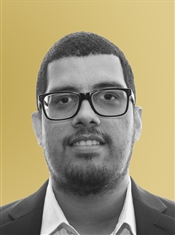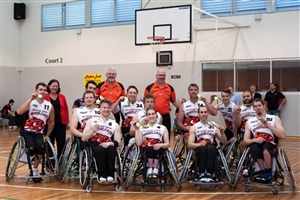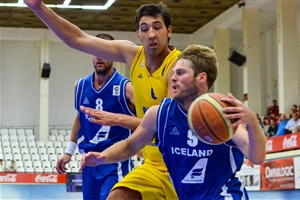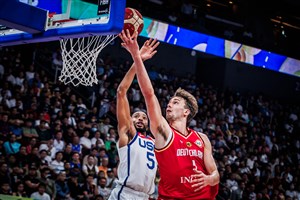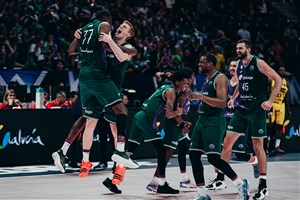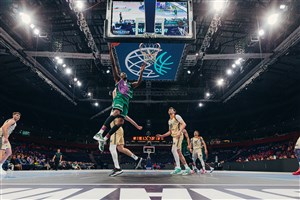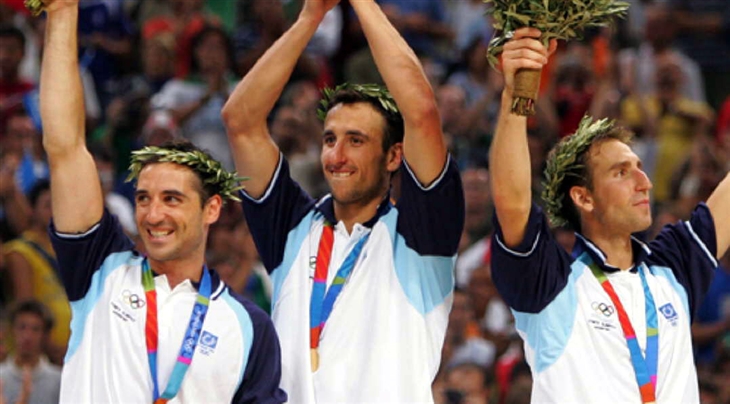
The basketball religion of Bahia Blanca
BAHIA BLANCA (William Rosario's Somewhere in the Americas) - One of the joys of doing what I do for a living is getting to experience the way different cultures live and breathe basketball. This week I’ve been in Bahia Blanca, Argentina during the FIBA Americas U16 Championship and it has been really interesting. This city bluntly states that it is the capital of basketball in South America and it sure makes a compelling argument.
The championship is being played in the Osvaldo Casanova stadium, built in 1939 and home to the legendary Estudiantes de Bahia Blanca club founded in 1918 with basketball as its main sport.
As soon as you enter the stadium, which in this present moment is ridiculously cold (seven degrees Celsius), you go through a corridor that quickly reminds you of the resonance of this club and city in the history of international basketball. On the wall, you can see a row of pictures that includes players such as Alberto Cabrera, Juan Espil, Alejandro Montecchia, Juan Ignacio "Pepe" Sanchez and Manu Ginobili, along with current national team coaches like Sergio "Oveja" Hernandez and Nestor "Che" Garcia, who are all Bahia Blanca legends.
It is said that basketball in Argentina started here in 1910, when North American soldiers (Marines) came to the country to take part in the May Revolution celebration, improvised a court as a way to have fun in their free time. They visited a Methodist church of Belgrano and Dorrego and played the first-ever basketball game in Argentina.
The sport remained relevant in the city to the point that just seven years later, in 1917, the Bahiense Basketball League was born with the participation of seven teams. It is home to an immense amount of basketball clubs, with Estudiantes as the most prominent in the history of the national league (in which they haven't won a title since their debut in the opening season back in 1985; their best finish was second in 1991).
But that has not diminished the importance of the sport to the city that in 1971 had its best players unite to form a local team that defeated then world champions Yugoslavia, in front of more than 3,000 fans.
I love how shooting guard and top scorer of the game Jose Ignacio De Lisazo retold the story to Publicable newspaper: "It was a very emotional game from the beginning. We had a lot of expectations, along with the fans in the arena that were excited about the fact that the undefeated world champions were playing in Bahia Blanca. They could never get into the game and we had a four-point lead in the last two minutes. The crowd was in awe that there was a possibility that we could make this happen. And we did. In the end, we scored two straight baskets and got the win. People could not leave the stadium, they stood there jumping and applauding, wanting to celebrate with us."
The current FIBA Americas U16 Championship has made this very apparent. The first two days of the tournament have had good attendance (packed house on opening night), with the aforementioned legends, visiting to watch Argentina play in Bahia Blanca.
This beautiful video was presented in the screens as part of the opening ceremony.
When it was finished, the announcer presented Espil, Montecchia and Ginobili, who were there and received a standing ovation from the crowd.
.@manuginobili is in the building for Argentina v Mexico in the #FIBAU16Americas played in his hometown Bahia Blanca! pic.twitter.com/33uqtTba0H
— FIBA (@FIBA) June 11, 2015
In the game, Argentina defeated a resilient Mexican team 85-70. Mexico's Salvador Martinez had a very good performance, with 24 points and five impressive three-pointers. To my surprise, when the kid was sent to the bench in the fourth quarter, everybody in the stadium applauded him. They acknowledged the fact that in spite of losing, and being an opposing team player, he had given them a basketball show that night and he deserved to be recognized for it.
Some Argentineans (those who don't live in Bahia Blanca of course) find all this self-proclamation a bit too much, but can't seem to dismiss the reality of this being a true basketball city, to the point that I am writing this column having come back from a restaurant which had the NBA Finals game live on two big screens. A pretty impressive thing when you consider the fact that Argentineans (outside of this city it seems) have futbol goggles for 99 perecent of the year and this same day the Copa America had kicked off in Chile.
There is no denying they love the game.
Six weeks ago, Argentina's current national team head coach, Sergio Hernandez, had a clinic in the city and he explained it best by saying that: "Some people tell me that it's been a long time since we produced a player or that we have never been champions of the national league. That is irrelevant. One day I was talking to Valdemaras Chomicius, the Lithuanian great and I asked him how a country like Lithuania, with a population of only three million, is the basketball powerhouse that it is. And he said: 'Sergio, in Lithuania basketball is not a sport, it's a religion.' And Bahia Blanca immediately came to mind. That's right. In Bahia Blanca, basketball is a religion. It's in our blood, in our DNA. It is not a fad. Bahia Blanca is basketball. And will remain so ... it is a high IQ basketball city."
If the turnout and appreciation they have shown to 15- and 16-year-old players this week is any reflection of their nature and love for basketball, it is undeniably impressive.
William Rosario
FIBA
FIBA's columnists write on a wide range of topics relating to basketball that are of interest to them. The opinions they express are their own and in no way reflect those of FIBA.
FIBA takes no responsibility and gives no guarantees, warranties or representations, implied or otherwise, for the content or accuracy of the content and opinion expressed in the above article.
